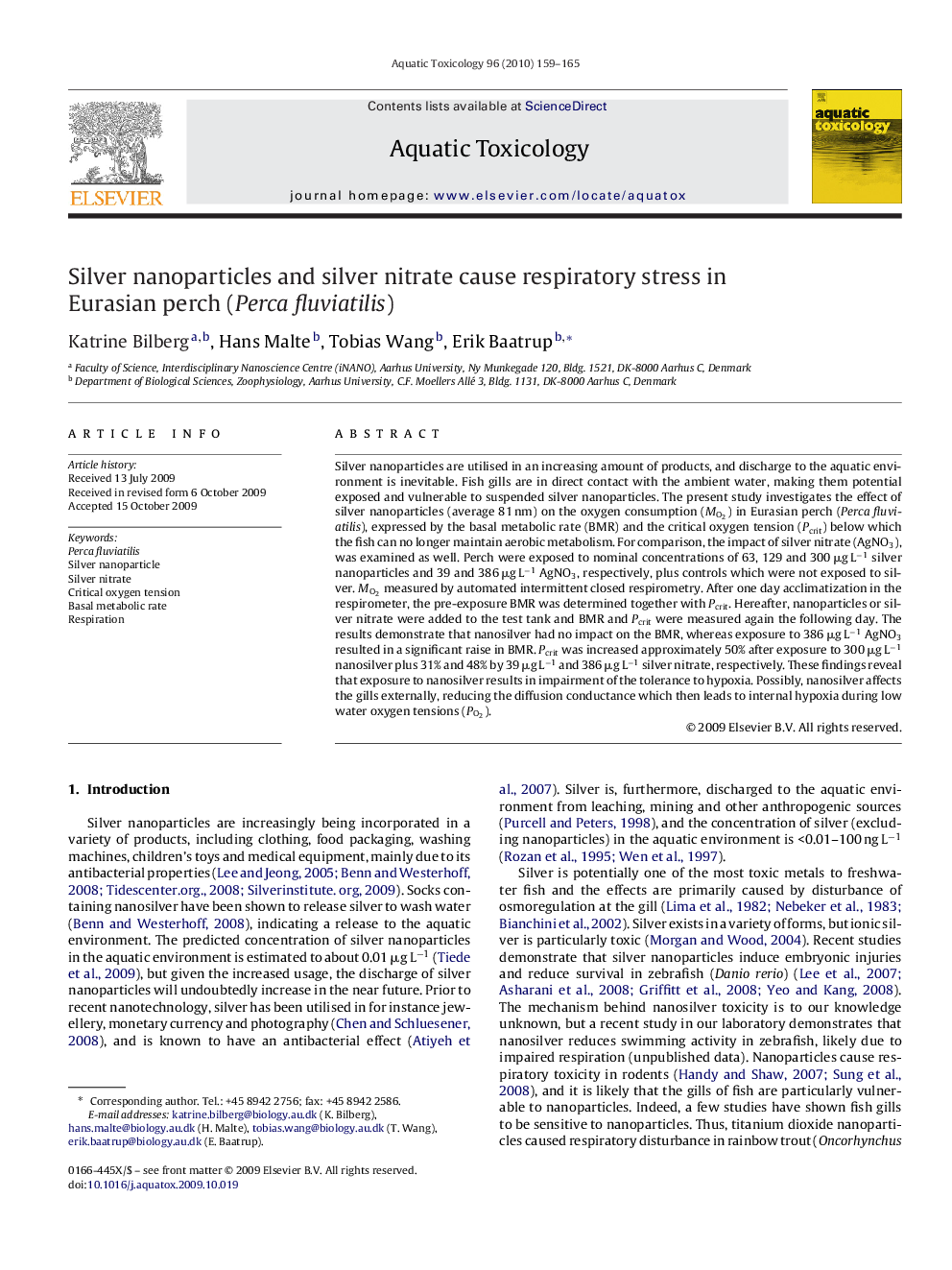| Article ID | Journal | Published Year | Pages | File Type |
|---|---|---|---|---|
| 4530336 | Aquatic Toxicology | 2010 | 7 Pages |
Silver nanoparticles are utilised in an increasing amount of products, and discharge to the aquatic environment is inevitable. Fish gills are in direct contact with the ambient water, making them potential exposed and vulnerable to suspended silver nanoparticles. The present study investigates the effect of silver nanoparticles (average 81 nm) on the oxygen consumption (MO2MO2) in Eurasian perch (Perca fluviatilis), expressed by the basal metabolic rate (BMR) and the critical oxygen tension (Pcrit) below which the fish can no longer maintain aerobic metabolism. For comparison, the impact of silver nitrate (AgNO3), was examined as well. Perch were exposed to nominal concentrations of 63, 129 and 300 μg L−1 silver nanoparticles and 39 and 386 μg L−1 AgNO3, respectively, plus controls which were not exposed to silver. MO2MO2 measured by automated intermittent closed respirometry. After one day acclimatization in the respirometer, the pre-exposure BMR was determined together with Pcrit. Hereafter, nanoparticles or silver nitrate were added to the test tank and BMR and Pcrit were measured again the following day. The results demonstrate that nanosilver had no impact on the BMR, whereas exposure to 386 μg L−1 AgNO3 resulted in a significant raise in BMR. Pcrit was increased approximately 50% after exposure to 300 μg L−1 nanosilver plus 31% and 48% by 39 μg L−1 and 386 μg L−1 silver nitrate, respectively. These findings reveal that exposure to nanosilver results in impairment of the tolerance to hypoxia. Possibly, nanosilver affects the gills externally, reducing the diffusion conductance which then leads to internal hypoxia during low water oxygen tensions (PO2PO2).
